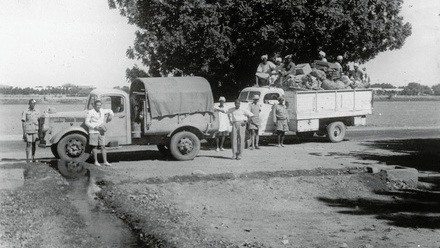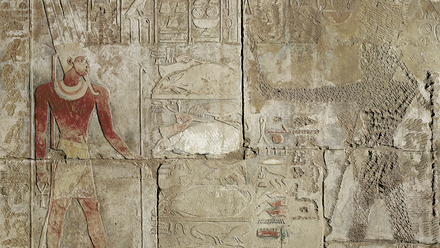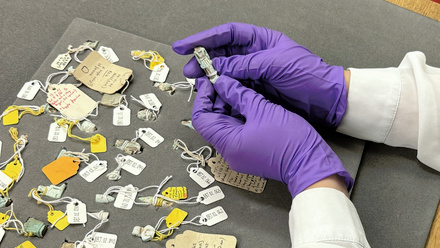The Lintel of Ahmose and Montu
By Adina Iaczko
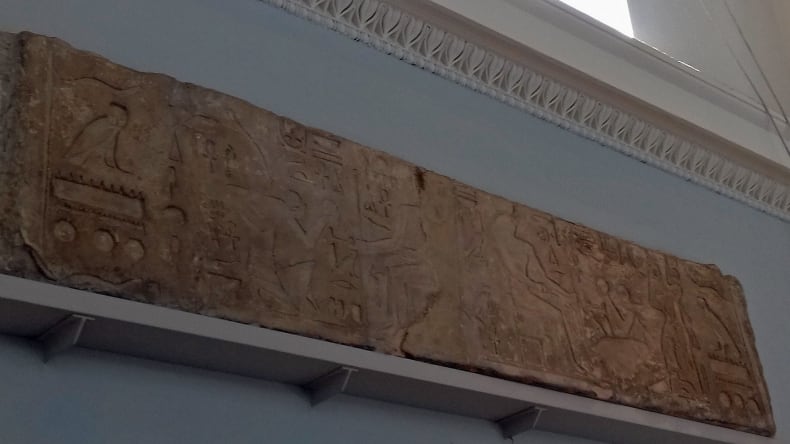
The lintel of Ahmose and Montu from Armant (BM EA1708, © Trustees of the British Museum)
In the sculpture gallery of the British Museum with the accession number EA1708 is a limestone lintel in sunken relief, measuring 217 cm long by 48 cm high. Dating to the beginning of the Eighteenth Dynasty (New Kingdom), the lintel depicts the first king of the dynasty, Ahmose, making offerings to Montu, the god of war. The lintel is divided into three fragments. From left to right, the fragments illustrate a column of hieroglyphic inscriptions, the king wearing the White Crown of Upper Egypt making offerings to an enthroned Montu, ‘Lord of Thebes’, and the king wearing the Red Crown of Lower Egypt again making offerings to the enthroned god, ‘Lord of Hermonthis’.
The lintel was discovered at the site of Armant (the Greek Hermonthis) during the excavation season of 1928-29, which was directed by Henri Frankfort on behalf of the Egypt Exploration Society. The lintel that was likely originally carved to be placed within a temple to Montu at Armant was instead excavated alongside blocks from various other periods that had been reused for the walls of the Bucheum, the burial place of the sacred Buchis bull.
The object was acquired by the British Museum in 1929, but the evidence regarding the chain of distribution is circumstantial rather than definitive. Although the distribution file (DIST.51.16a) lists a ‘Monthu Block’, it is not clearly specified that the object went to the British Museum. This can only be deduced indirectly from a previous letter (DIST.51.10) from the British Museum to the EES, acknowledging the receipt of objects from Armant:
The Trustees appreciate […] the selection is […] representative of every branch of discoveries made […] everything of importance from the Armant site that was not retained in Cairo.
The lintel is additionally mentioned in Volume 4 of the British Museum Quarterly as ‘the second monumental object of this king to reach the Museum’ (p. 77).
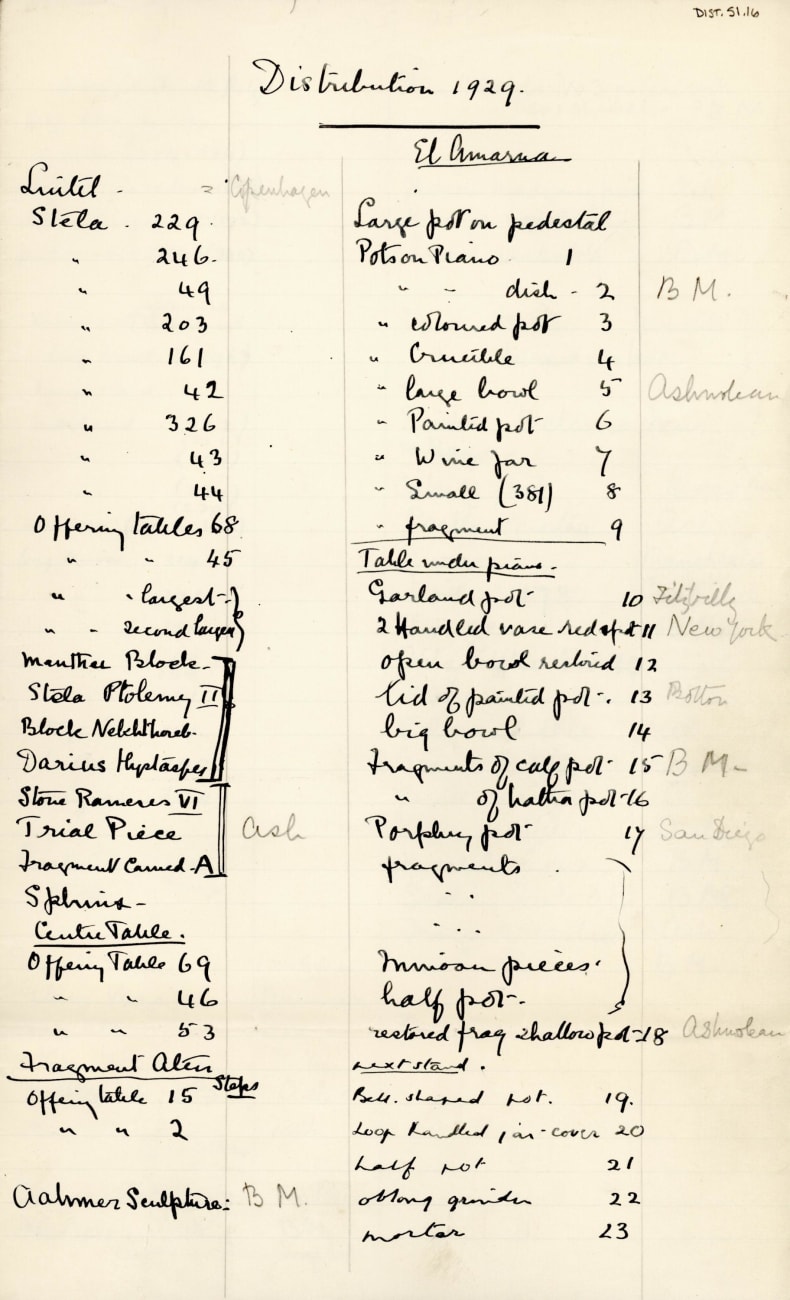
|
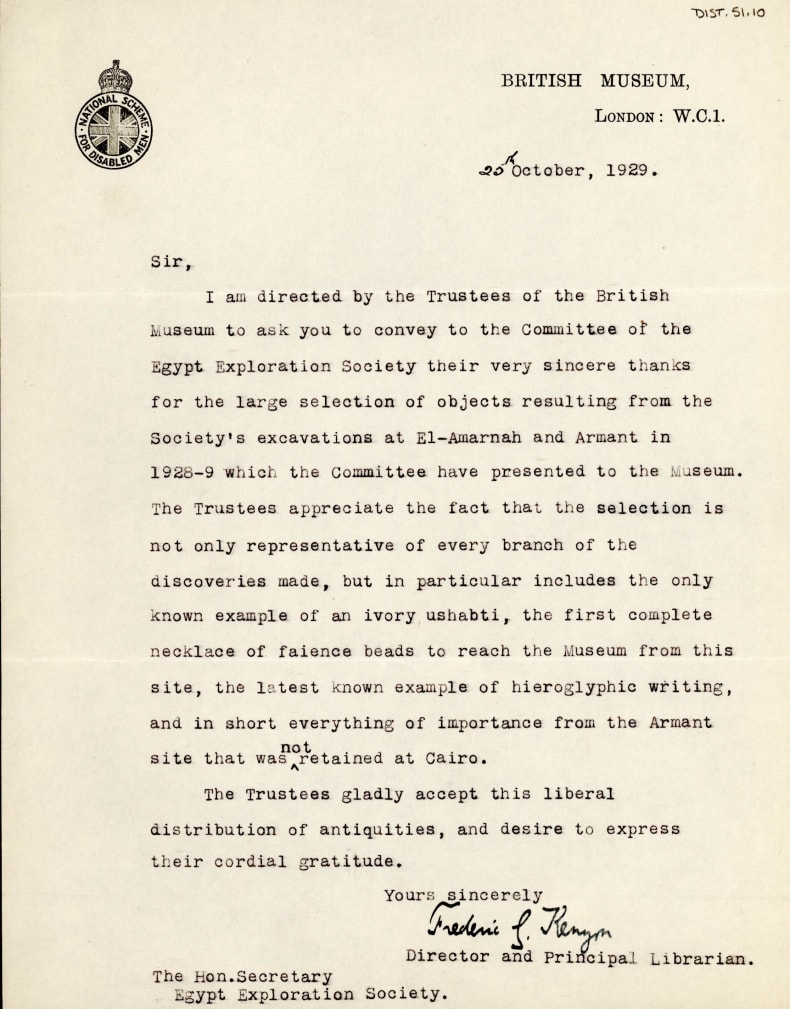
|
Left: 1929 distribution list (DIST.51.16a) with the lintel listed in the left column as 'Monthu Block'. Right: Letter referring to the objects received by the British Museum from the EES excavations at Armant (DIST.51.10).
The archival and bibliographical records are particularly useful in this case, as no image of the object is provided on the British Museum online catalogue. The plates in the EES memoir and the negatives of the images (ARM.NEG.171-173) taken at the time of excavation reveal that the object was initially fragmented, whereas it is displayed in the museum in reconstructed form.
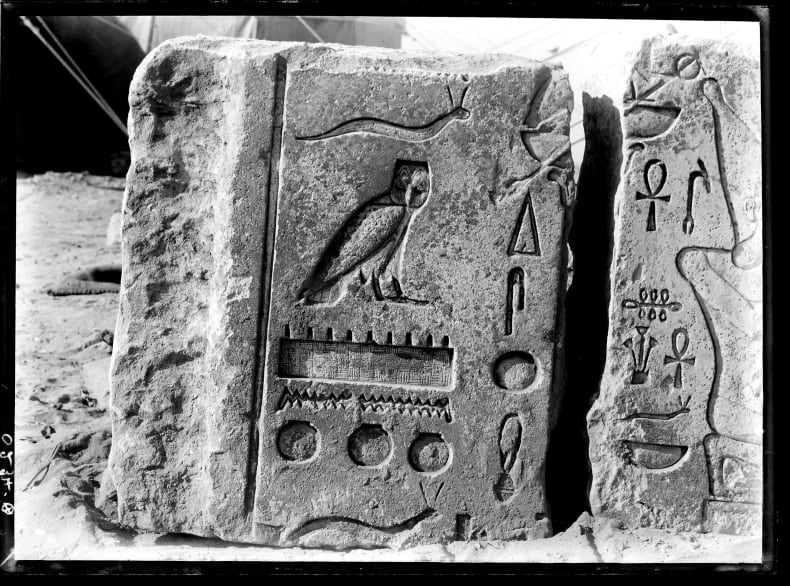
|
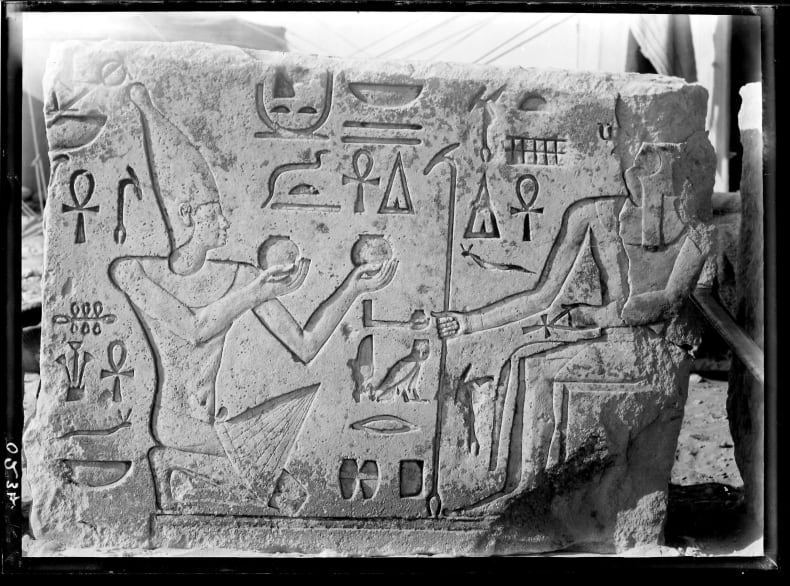
|
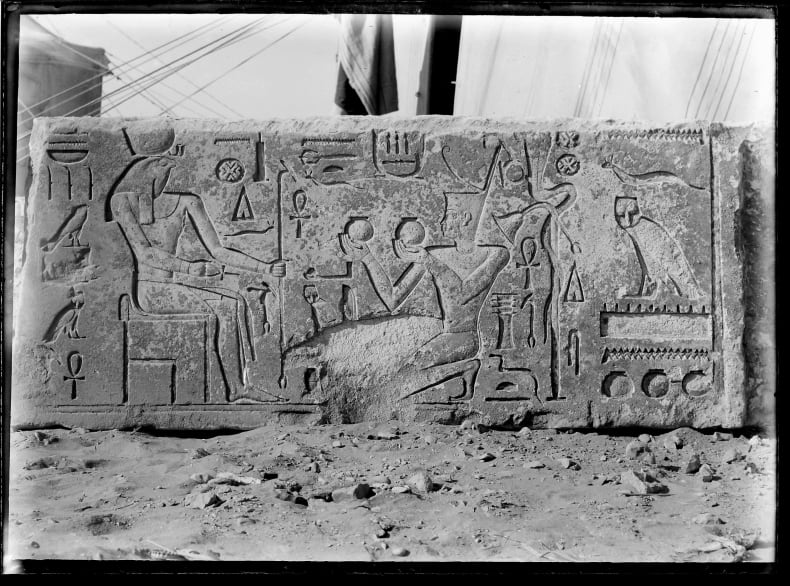
|
EES Glass-plate negatives showing the three separate fragments of the lintel (left to right: ARM.NEG.173, .172, .171).
The case study of this object demonstrates the importance of archives and thorough record-keeping for understanding the journey made by an object from the site of excavation to its current location. This is relevant not only for the history of an object but also for legal considerations, as attested by recent cases of disputed object ownership.
Further Reading and Resources
Artefacts of Excavation, Armant 1928-1929
British Museum Online Catalogue, EA1708
Mond, Sir R. and Myers, O. H. 1934. The Bucheum, Vol II. The Inscriptions. London: The Egypt Exploration Society.
Mond, Sir R. and Myers, O. H. 1934. The Bucheum, Vol III. The Plates. London: The Egypt Exploration Society.

